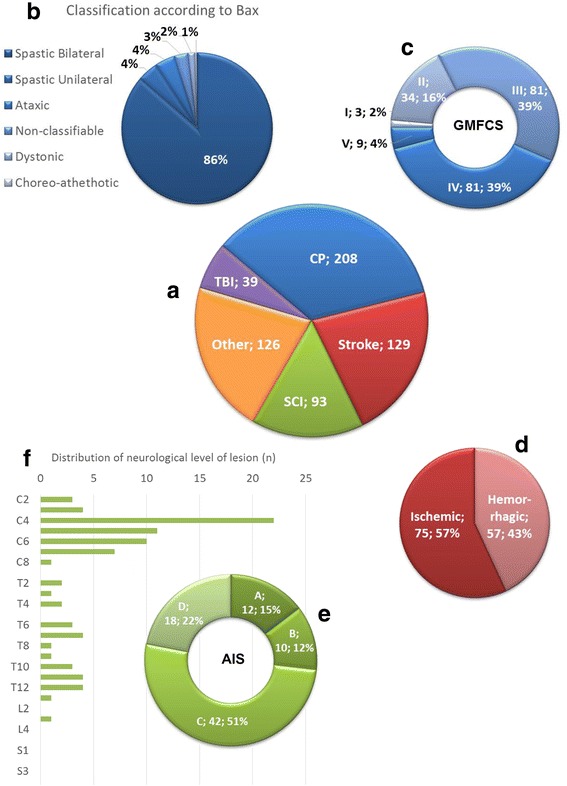Fig. 3.

Clinical characteristics of the patients. (a) The largest group of patients are those with a Cerebral Palsy (CP), followed by stroke, spinal cord injury (SCI) and traumatic brain injury (TBI). (b) The clinical diagnosis according to Bax and (c) the severity grade according to the Gross Motor Function Classification System (GMFCS) are shown for patients with CP. (d) For patients with stroke, the distribution between patients with ischemic versus hemorrhagic stroke is shown. (e) For patients with SCI, the ASIA Impairment Scale (AIS) is shown and reflects the severity (AIS A, sensorimotor complete; AIS B motor complete, sensory incomplete; AIS C and D sensorimotor incomplete with AIS C indicating that less than half of the muscles below the neurological level of lesion have a muscle grade of 3 or more and AIS D indicating that half or more of the muscles below the neurological level of lesion have a grade 3 or higher). (f) Finally, the distribution of the neurological level of lesion is presented. Abbreviations: C, cervical; T, thoracic; L, lumbar and S, Sacral
